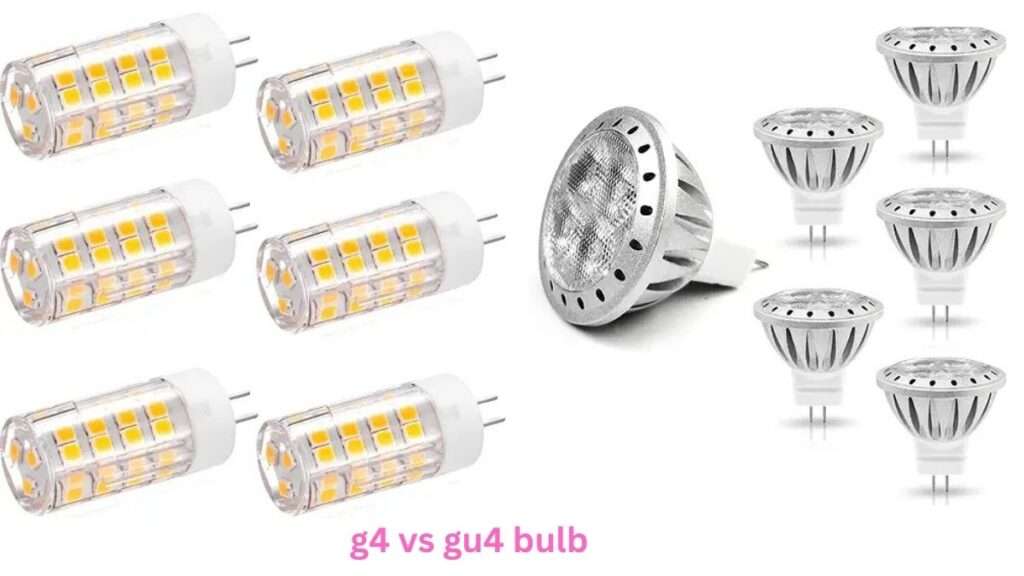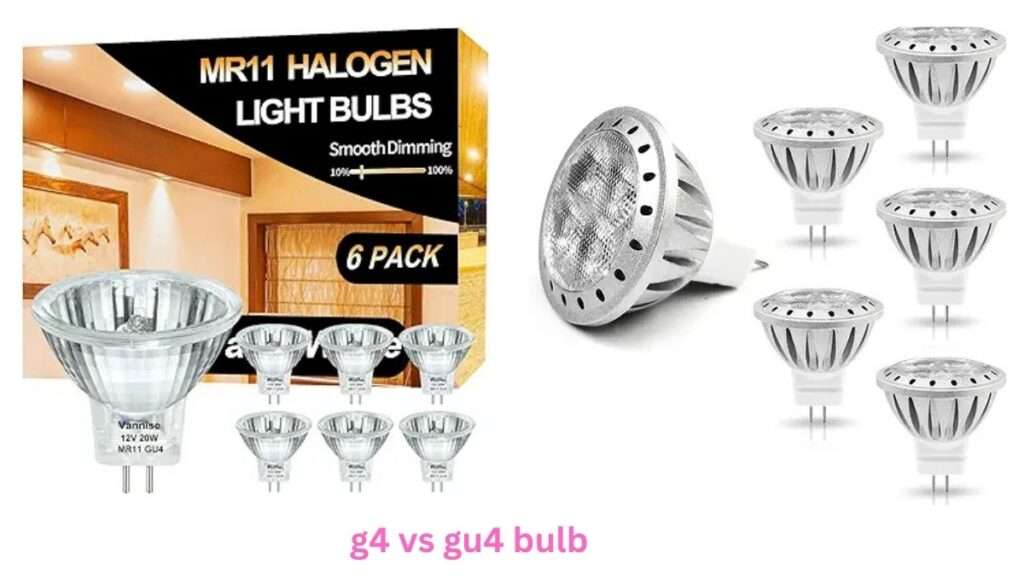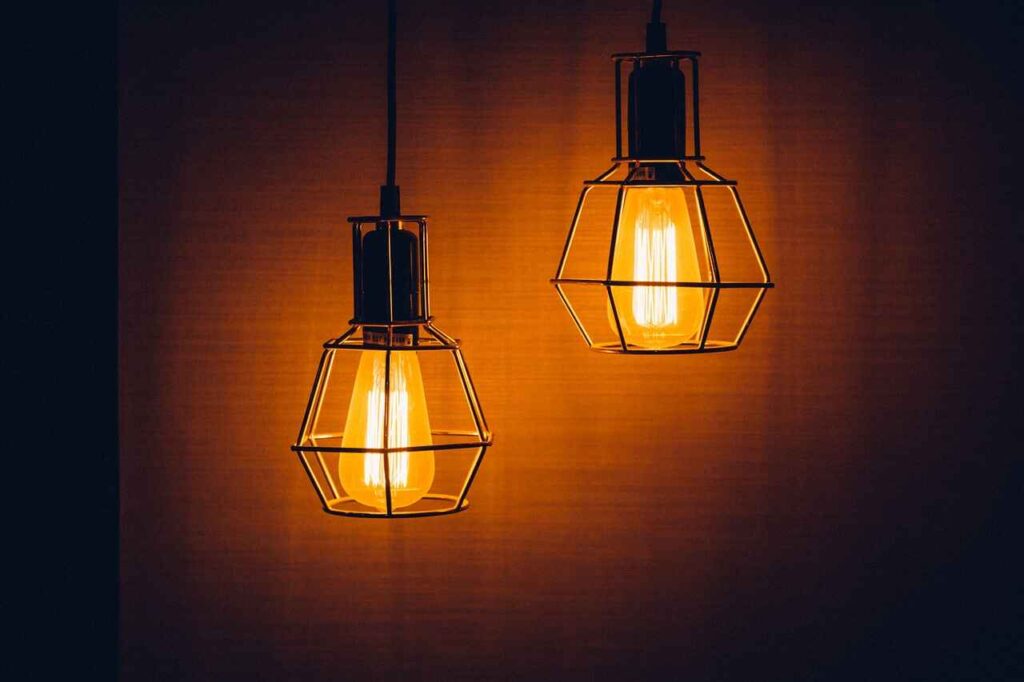Lighting technology has come a long way, and choosing the right bulb can make all the difference in your home or workspace. Did you know that the average household has about 40 light bulbs? That’s a lot of opportunities to get it right—or wrong! Today, we’re diving into the world of compact halogen lamps, specifically the G4 vs GU4 bulbs. These little powerhouses might look similar at first glance, but they’ve got key differences that could impact your lighting setup. Let’s shed some light on the G4 vs GU4 debate and help you make the brilliant choice for your illumination needs!
What Are G4 vs GU4 Bulbs?
G4 Bulbs are low-voltage, compact halogen bulbs, typically used for accent lighting, task lighting, and under-cabinet lighting. These bulbs are known for their small size and bi-pin base, making them perfect for spaces where a low-profile, focused light source is needed. G4 bulbs usually operate at 12 volts, and because of their compact size, they are common in smaller fixtures like puck lights or landscape lighting.
On the other hand, GU4 Bulbs are also small, low-voltage halogen bulbs but feature a unique twist-lock base. Unlike the simple bi-pin design of G4, the GU4 has pins with thicker prongs and notches, allowing it to twist and lock into the socket. This makes GU4 bulbs more secure in certain installations. Like G4, GU4 bulbs are often used in spotlight fixtures or recessed lighting, giving targeted, bright light to specific areas.
Historically, both bulbs originated from halogen lighting technology that dates back several decades. Over time, their design has improved to make them more efficient and versatile, allowing them to be used in a wide range of applications.
Common Applications:
- G4 Bulbs: Under-cabinet lighting, accent lighting, landscape lighting, RV lights, and marine lighting.
- GU4 Bulbs: Spotlights, task lighting, recessed lighting, and display cases.
Physical Differences: Size, Shape, and Base
At first glance, G4 and GU4 bulbs may seem almost identical in size, but there are subtle physical differences worth noting.
- Size & Shape: Both G4 vs GU4 bulbs are small and compact, making them suitable for tight spaces. However, GU4 bulbs are typically a little larger and bulkier due to their twist-lock mechanism, whereas G4 bulbs are simpler and slimmer.
- Base Design: The most significant difference is in the base. G4 bulbs have a bi-pin base with two thin pins, making it easy to slide them into sockets. In contrast, GU4 bulbs use a twist-lock base, which provides a more secure connection, ideal for fixtures where the bulb might be subjected to vibrations or movement.
These physical differences affect installation and compatibility. G4 bulbs are easier to insert into simple fixtures, while GU4’s twist-lock base ensures a more stable connection, especially in fixtures like recessed spotlights or under-cabinet lights.
Electrical Characteristics and Performance
When it comes to electrical requirements and performance, both G4 and GU4 bulbs operate at low voltage, usually around 12V. However, their wattage ranges and performance may vary depending on the model and application.
- Voltage Requirements: Both bulbs typically require a transformer to convert the standard voltage down to 12V. It’s crucial to match the right transformer with the bulb to avoid flickering or overheating.
- Wattage: G4 bulbs come in wattages ranging from 5W to 20W, while GU4 bulbs often have slightly higher wattage options, from 10W to 35W. This means GU4 can sometimes offer brighter light output.
- Luminous Efficacy: GU4 bulbs tend to have a higher luminous efficacy, meaning they convert more power into visible light. This makes them slightly more efficient in producing brighter light with less energy.
- Color Temperature: Both G4 and GU4 bulbs offer a variety of color temperatures, ranging from warm white (2700K) to cool white (4000K), depending on the desired ambiance. Whether you want a cozy, warm glow for living areas or a crisp, cool light for task lighting, both options are available.
Lifespan and Durability
When comparing lifespan, halogen bulbs, in general, don’t last as long as LED alternatives. However, both G4 and GU4 bulbs are durable and reliable.
- G4 Lifespan: G4 halogen bulbs typically last around **2,000 hours** with proper care. However, the frequent switching on and off or exposure to vibrations can shorten their lifespan.
- GU4 Lifespan: GU4 bulbs tend to have a slightly longer lifespan, often around 3,000 hours, due to their more secure twist-lock design, which provides better stability and reduces the chance of premature failure.
Despite halogen bulbs having shorter lifespans compared to LEDs, they remain a cost-effective option for many applications.
Energy Efficiency and Environmental Impact
While both G4 and GU4 bulbs are halogen, they are not the most energy-efficient options available today. However, energy-saving LED versions of both types exist and are becoming increasingly popular.
- Energy Consumption: Traditional G4 and GU4 halogen bulbs consume more energy compared to their LED counterparts. Upgrading to LED G4 or GU4 bulbs can save up to 80% of energy, leading to lower electricity bills and a reduced carbon footprint.
- Environmental Impact: Halogen bulbs, like G4 and GU4, contain tungsten filaments and produce more heat than LEDs. While not hazardous, halogen bulbs should be disposed of properly. On the other hand, LEDs are more eco-friendly, contain no harmful chemicals, and can be recycled.
Installation and Safety Considerations
Installing G4 and GU4 bulbs is relatively straightforward, but there are some important considerations.
- G4 Installation: Simply insert the bi-pin base into the socket. Make sure to check compatibility with your fixture’s transformer. Never handle halogen bulbs with bare hands; the oil from your skin can reduce their lifespan.
- GU4 Installation: Align the pins with the socket, then twist the bulb to lock it in place. The twist-lock feature makes GU4 bulbs more secure, reducing the chances of them loosening over time.
In both cases, make sure to turn off the power before installation and use compatible fixtures to avoid safety hazards.
Choosing Between G4 vs GU4: Factors to Consider
When deciding between G4 vs GU4 bulbs, consider the following factors:
1. Fixture Compatibility: Does your fixture support a bi-pin or twist-lock base?
2. Light Output: GU4 bulbs often provide higher brightness, making them ideal for task lighting, while G4 is better suited for accent lighting.
3. Energy Efficiency: If energy savings are a priority, consider LED versions of both bulbs.
4. Cost: While G4 bulbs might be slightly cheaper upfront, GU4 bulbs can offer better stability and performance in the long run.
5. Availability: Check if your preferred bulb type is easy to find and replace.
Conclusion
Illuminating your space is more than just flipping a switch—it’s about making informed choices that balance performance, efficiency, and style. Whether you’re team G4 or leaning towards GU4, both bulbs have their place in the lighting world of 2024. The best choice depends on your specific needs, fixtures, and priorities. So, don’t be afraid to experiment with different options to find the perfect lighting solution for your space. After all, the right bulb can transform a room from drab to fab! The power is in your hands—so, will you choose the versatile G4 or the secure GU4?
Related articles:


